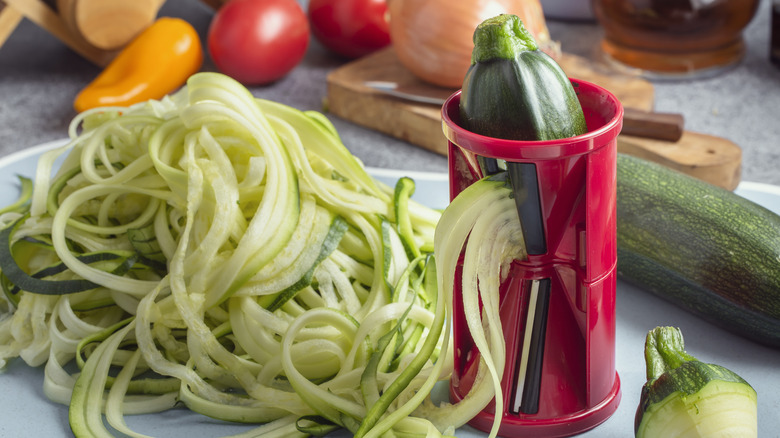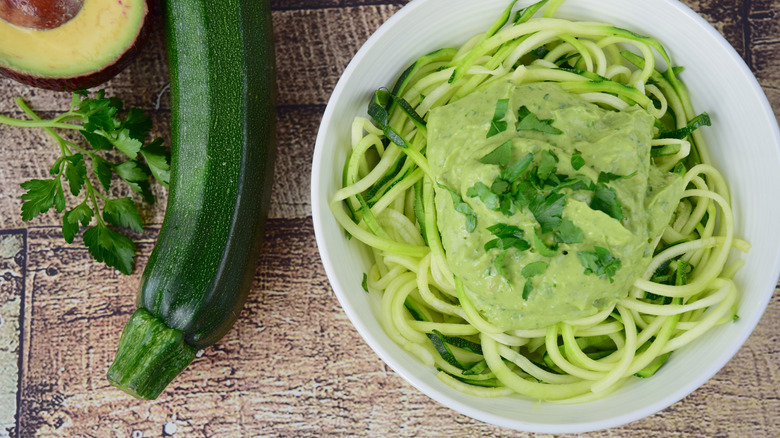If Your Zucchini Noodles Are Coming Out Soggy, There's A Super Simple Fix
We may receive a commission on purchases made from links.
Zucchini noodles, or zoodles, burst onto the scene in the 2010s, thanks to the low-carb diet trends. They brought back the flagging Noodles & Co. chain from the dead and even worked their way onto the Olive Garden menu. If you've bought a spiralizer (like the Brieftons 5-Blade model), you know how great those zoodles can be, and hey, topping zoodles with sauce is a great way to get your daily dose of vegetables in (without tasting them too much). But you also might have run into the main issue for many zoodle lovers: They can get so soggy.
Luckily, there's an easy fix for that, and it just involves one extra step. After spiralizing all the noodles you want to use, you're going to thoroughly salt and oil them, then throw them in the oven on a baking sheet for around 10 minutes at 375 to 400 degrees Fahrenheit. Collect them all in a colander. As they have softened from the heat and continue to put off moisture, let them sit in there until you're ready to serve (hopefully quite soon). We think you'll find zoodles prepped this way are a lot less soggy; therefore, your entire dish won't be so waterlogged, either.
More tips for avoiding soggy zoodles
Before you roast your zoodles, you can add another extra step (if you want) to help remove some of the moisture from these very damp noodles. You'll take a nut milk bag (the Ellie's Best nut milk bag boasts strong reviews), which is made of a very thin mesh that is ideal for straining the nut detritus and pulp away from the milk, throw the zucchini noodles into it, and squeeze as hard as you can to release the moisture from them.
One of the biggest mistakes people often make when working with zoodles is overcooking them. When water-dense vegetables like zucchini (they're literally 94% water) get heated up, they release a lot of moisture. While you might have taken steps to mitigate how much water is left in your zoodles, overcooking them may cause whatever water is still left inside to seep out. Zoodles are best enjoyed when tender, but not totally limp, so if you roasted them per the instructions above, they don't need to go into a hot pan –- they're ready to be tossed with sauce and served!

